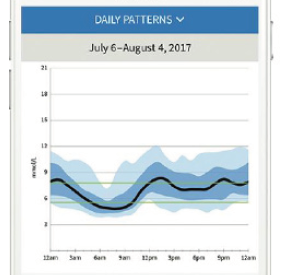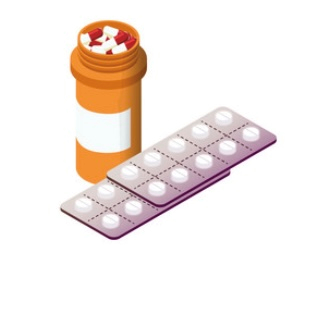For those new to FGM, here are some strategies to effectively utilise this technology:
Regularly scanning your glucose levels, at least once every eight hours, helps identify patterns and informs necessary adjustments for optimal glucose control.
Suggested timings for scanning:

- Upon waking
- Before and two hours after meals
- Before and after exercise
- Every two to three hours when stressed or unwell
Tips:
FGM readings may differ from finger-prick tests, especially when glucose levels are rapidly changing. If FGM readings do not align with your symptoms, perform a finger-prick test for confirmation.
2. Understanding blood glucose targets
Discuss and establish glucose targets with your healthcare team. The aim is to maintain glucose levels within these targets as consistently as possible.
An example of glucose targets:
| Before a meal | 2 hours after a meal
|
|---|
| 4-7 mmol/L | Less then 10 mmol/L |
Tips:
Modify food intake, physical activity or diabetes medications in response to glucose levels outside your target range. Consult your healthcare team for guidance.
3. Interpreting trend arrows
Trend arrows on the FGM display provide insights into the direction of your glucose level changes.
| Arrows | What it means |
|---|
 | Glucose is rising quickly |
 | Glucose is falling quickly |
 | Glucose is stable |
Keep a Diary
Keep a record of your diet, exercise, diabetes medications, and any unusual conditions like illness or hypoglycaemia symptoms. This diary can be maintained using the glucose sensor app, sensor reader or a manual log sheet. Sharing these records with your healthcare team enhances the effectiveness of your diabetes management. 

























